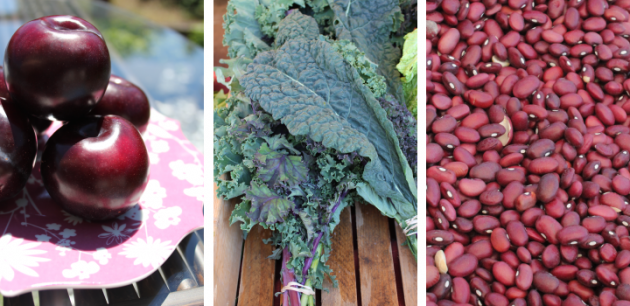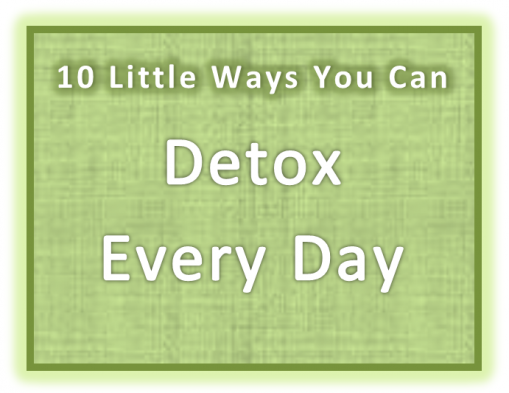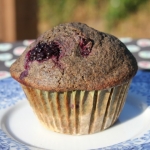Detox Every Day 7: Amp Up Your Fiber Intake
eat more fiber to put those toxins where they belong: in the toilet bowl

Have you noticed a trend with some of the little ways you can detox every day? A lot of them have to do with what you should or should not put in your mouth. Here’s another thing you should stick in your mouth: fiber.
Fiber helps you poop. Pooping is a natural means to detoxify. We were made to get the crap out. By eating fiber, you are beefing up your body’s own natural route of elimination. A high fiber diet can prevent a number of health conditions, including atherosclerosis and several different types of cancers. Why do you think fiber can ward off so many different diseases? Because it plays a central role in getting inflammatory and carcinogenic toxins out of your body.
Fiber pulls toxins out of your body and into your poop. If you don’t eat enough fiber, the toxins either hang out in your colon a lot longer than they should or they get re-absorbed back into your body. Fiber gets them out for good. Remember, we want toxins out as soon as possible. For this very reason, fiber is especially crucial on a therapeutic detox, but if you’re eating the amount you should every day, you’re preventing the build-up of toxins in the first place.

If you want to learn about the exact physiology of why fiber is so detox friendly, you can look up enterohepatic circulation of bile salts. Basically, the liver spits out the toxins in the bile. The bile, along with the toxins, goes into the intestines. After the bile helps to digest your food, your intestinal flora changes its structure to prepare it for re-absorption. This means that it goes back into your body. Your body likes to conserve things, so most of the bile is recycled in this manner. Fiber interrupts this recycling loop. It binds to the bile (toxins included) and puts it in your poop. When you pull bile out of the recycling loop, it forces your liver to make new bile (this is how fiber can lower cholesterol).
Fiber also removes heavy metals from the body. Heavy metals can be included under the umbrella term ‘toxins’, but I wanted to highlight them here because this is significant! Heavy metals, particularly mercury and lead, are secreted in the bile when the liver is trying to get rid of them. That means if you eat enough fiber, you can help your body eliminate these heavy metals. When your diet is lacking in fiber, heavy metals are reabsorbed, going back into your body. This is why a low fiber diet can be so damaging. You lose the protection that a high fiber diet provides, allowing heavy metals, carcinogens, and other toxins to roam around your body.
A lot of people like to think they eat a lot of fiber, but if you live in the United States, you probably don’t. The average dietary fiber intake in the United States is about 15g a day, way below the recommended 25-38g we should be consuming daily.1 If you want to see if you ate enough fiber today, you can look up almost any food in the USDA Nutrient Database.
Take Away Tips:
- Eat your beans! Legumes are an excellent source of fiber.
- Broccoli, brussels sprouts, and kale are veggies high in fiber, giving you a double detox: fiber + liver food.
- Eat kale green smoothies. I can’t say this enough! Two hundred calories of kale provides 15g of fiber.2
- The best way to consume fiber is through a high fiber diet. Nothing can beat this.
Resources:
1. Slavin, JL. “Position of the American Dietetic Association: health implications of dietary fiber.” Journal of the American Dietetic Association. 2009 Feb;109(2):350.
2. The World’s Healthiest Foods. <http://whfoods.org/genpage.php?tname=foodspice&dbid=38>.
Enjoy More Archerfriendliness
Withania somnifera is the latin name for ashwagandha, a sanskrit word that literally means 'horse pee'. This word must vary in translations because I learned in an Ayurvedic class that ashwagandh...
My baby has always loved yams, broccoli, and pears, but since she has turned 12 months, she is protesting. Despite multiple attempts to serve her these foods hidden, mixed, and chopped to crumb s...
Anti-perspirant arm deodorant is a double duty detox villain. It directly impedes your ability to sweat, while exposing you to aluminum at the same time. Many are willing to pay this toxic price to ...








Emily
September 6th, 2011 at 7:28 am
Archer, do you have any recipes for kale smoothies? I noticed you’ve mentioned them a few times in your Detox Series. I bought some kale this weekend, hoping to make a new favorite veggie out of it.
Reply
Dr. Archer
September 8th, 2011 at 11:22 pm
Hey Emily! Sorry I didn’t write back sooner! I don’t have any written down recipes, but I recommend starting out with a ratio of a lot of fruit to a little bit of kale, and then work your way up. As time goes on, you can start decreasing the amount of fruit and increasing the amount of kale — to help you get used to them! Right now, I’ve been enjoying them with kale, coconut oil, raw nori, frozen banana, and frozen watermelon. My staple kale smoothie contains lots of blueberries, blackberries, beets, kale, coconut oil, raw nori, and a citrus fruit (orange or grapefruit). My staple kale smoothie tastes really earthy though. Let me know what you try!
Reply
Emily
September 9th, 2011 at 6:18 am
Thanks for responding! I know you’re quite the busy bee with all of your little bees and a little thing called medical school ;)
That all sounds awesome. I love beets, so I might try that one. But I also love banana. Oh the choices! I think I’ll be experimenting this weekend. I’ll let you know.
I have been doing more research on gluten-free for my GERD/IBS, and found a lot of my other diagnoses in the past (even from childhood) all link-up to a gluten intolerance/celiac disease. I’m going to try gluten-free and see if it helps with my current symptoms, but I also want to talk to my doctor and possibly see a specialist. My medical history is starting to look like a completed puzzle with a gluten intolerance or celiac, not just a bunch of scattered pieces like I always thought it was…
Reply
Dr. Archer
September 10th, 2011 at 8:33 pm
I also have been putting chopped kale in my scrambled eggs. If I make them, and there is kale in the fridge, the kale goes in the scrambled eggs. Its actually delicious!
Reply